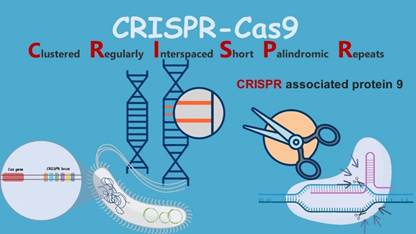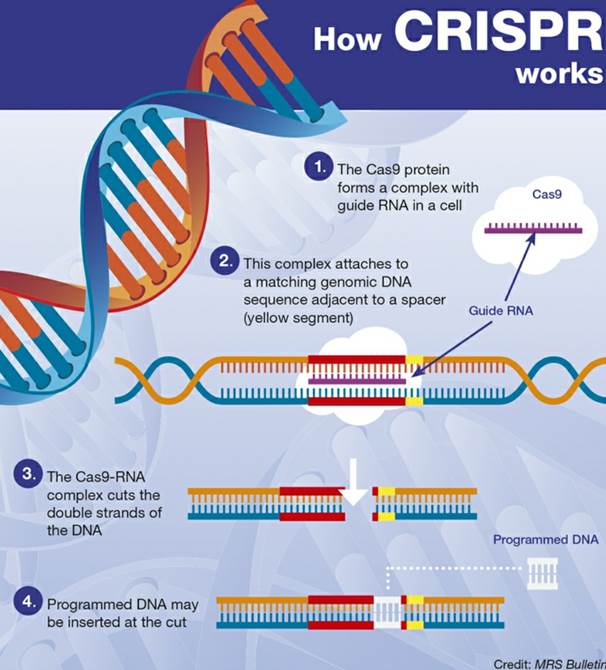Description

Disclaimer: Copyright infringement not intended.
Context
- Scientists have, for the first time, used CRISPR technology to insert genes that allow immune cells to attack cancer cells, potentially leaving normal cells unharmed and increasing the effectiveness of immunotherapy.
CRISPR Technology
- Clustered Regularly Interspaced Short Palindromic Repeats (CRISPR) is a reference to the clustered and repetitive sequences of DNA found in bacteria, whose natural mechanism to fight some viral diseases is replicated in this gene-editing tool.
- It helps in Editing, or modification, of gene sequences to eliminate — or introduce — specific properties in an organism.
- Gene editing technology happening for several decades now, particularly in the field of agriculture, where genetically modified variants, with specific desirable traits, are regularly developed.
- CRISPR technology is different. It is simple, and it does not involve the introduction of any new gene from the outside.
- Its tool is usually compared to the ‘cut-copy-paste’, or ‘find-replace’ functionalities in common computer programmes.
- A bad stretch in the DNA sequence, which is the cause of disease or disorder, is located, cut, and removed — and then replaced with a ‘correct’ sequence.
- And the tools used to achieve this are not mechanical, but biochemical — specific protein and RNA molecules.
- The entire process is programmable, and has remarkable efficiency, though chances of error are not entirely ruled out.
- The technology replicates a natural defense mechanism in some bacteria that use a similar method to protect themselves from virus attacks.

Copyright infringement not intended
Wrapping up
- Several diseases and disorders are genetic— that is, they are caused by unwanted changes or mutations in genes. These include common blood disorders like sickle cell anaemia, eye diseases including colour blindness, several types of cancer, diabetes, HIV, and liver and heart diseases. Many of these are hereditary.
- CRISPR technology opens up the possibility of finding a permanent cure to many of these diseases.
- It could also correct the deformities arising out of abnormalities in gene sequences, like stunted or slow growth, speech disorders, or inability to stand or walk.
- Japan has already approved the commercial cultivation of a tomato variety that has been improved using CRISPR-based intervention.
- In India, several research groups are working on CRISPR-based enhancements for various crops including rice and banana.
- There are several concerns related to the potential misuse of the technology, such as creating a ‘designer baby’, and the possibility of being inherited by successive generations,these concerns need to be addressed by engaging in further ground-level tests and trials and formulating strict guidelines and laws to curb the potential misuse of the technology.

https://www.thehindu.com/sci-tech/personalised-cell-editing-used-to-treat-cancer-patients-study/article66127624.ece












